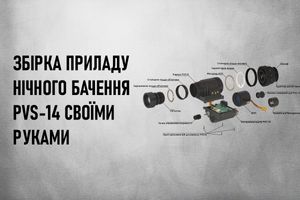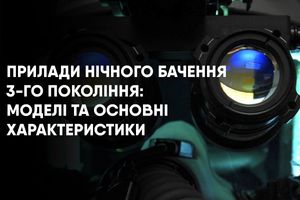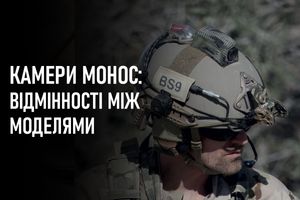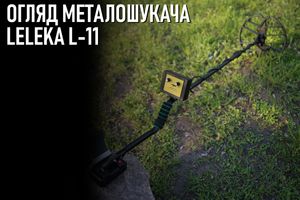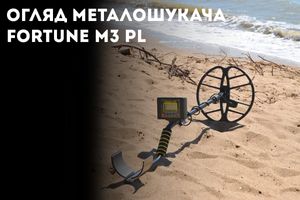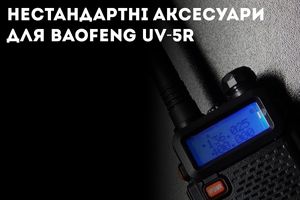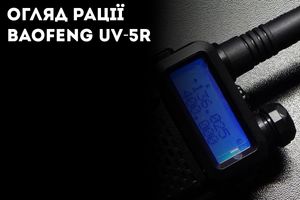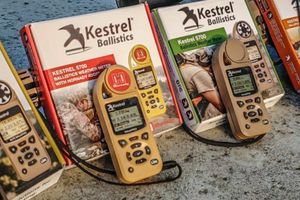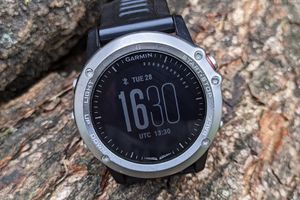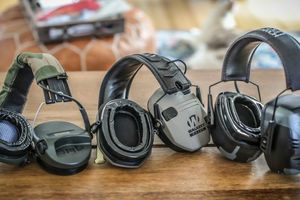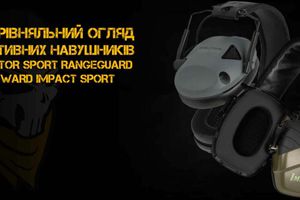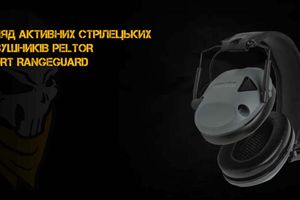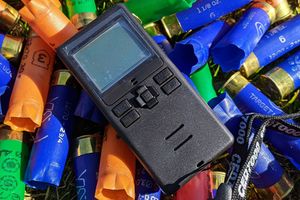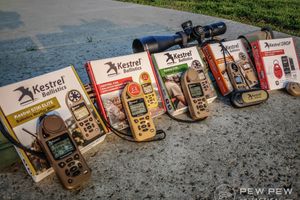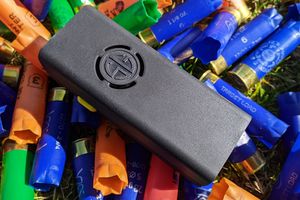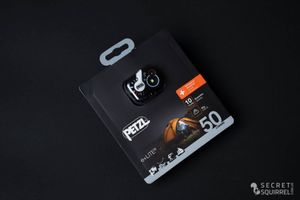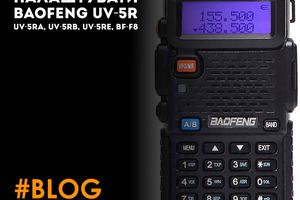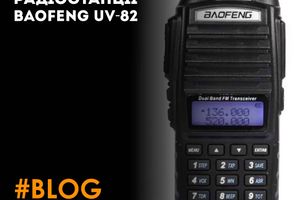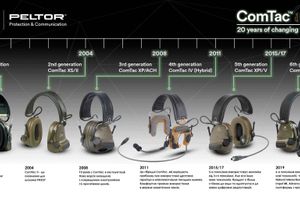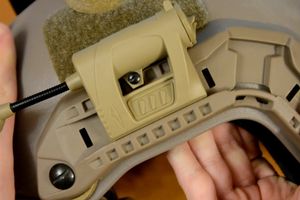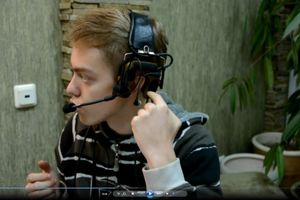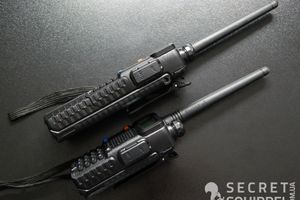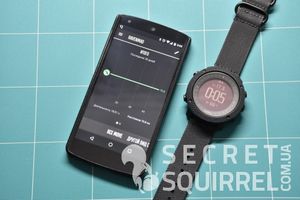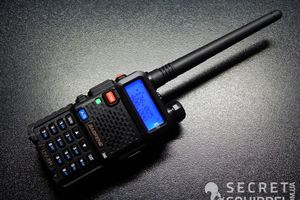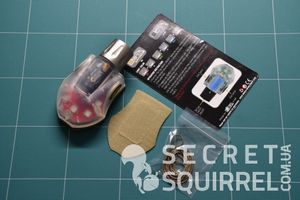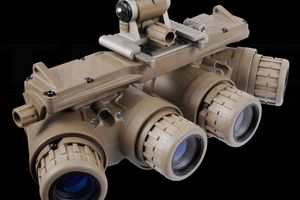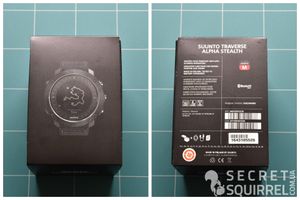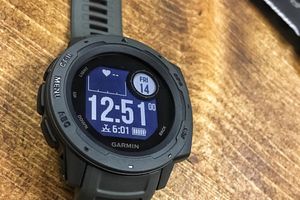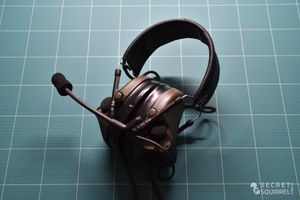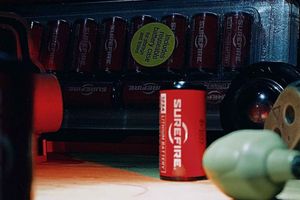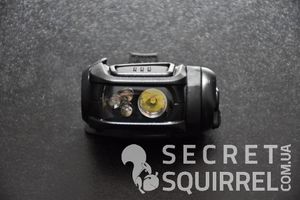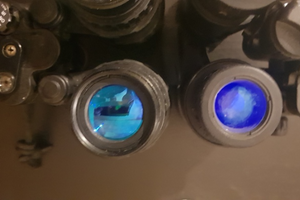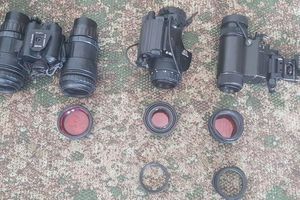Comparison of frequency ranges: CB, VHF, UHF (LPD).
We are glad to present you another test of radios. This time we tested portable radios in a dense forest. The mixed massif is a damp forest with small height differences without clearings and paths. Animal tracks indicate that this forest is wild, but, fortunately, we did not meet either a wild boar or a beaver. During the experiment, the weather changed from sunny to windy and rainy, the average air temperature was +10°C.

For experiments, we chose the following models:
|
|
The walkie-talkies were not modified, standard antennas and batteries supplied in the kit were used, all of them were set to the maximum transmitter power level.
Location of the test.
Forest area between Lopukhinsky and Gostilitsky rural settlements of the Lomonosovsky district of the Leningrad region. Base coordinates 59°44′25″N (59.74014); 29°29′52″E (29.49784).
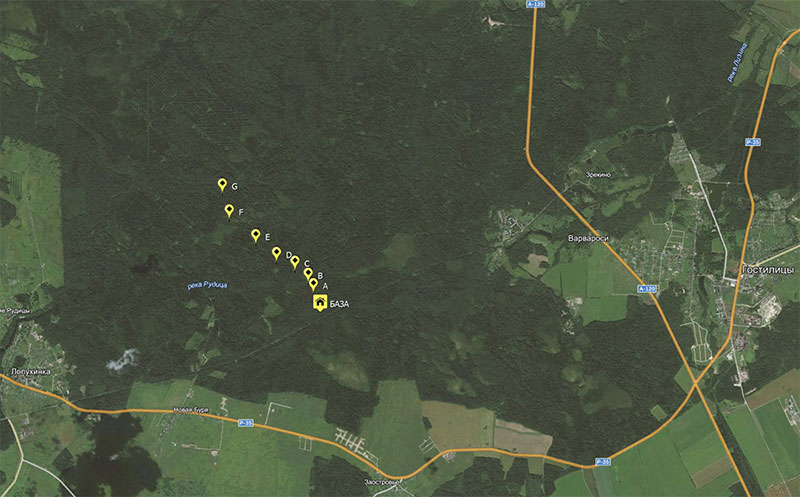
Testing methodology.
Base - a stationary point where the first correspondent with a set of walkie-talkies is located.
The second correspondent, together with his partner, move on foot at a distance from the Base to the forest and have a second set of radios with them. Upon reaching the testing point, the second correspondent notes the coordinates of his location in the table, indicates the distance to the Base in a straight line. After positioning, a communication session is established on identical walkie-talkies, each correspondent counts from 1 to 10 and enters the results of the signal evaluation into the table.
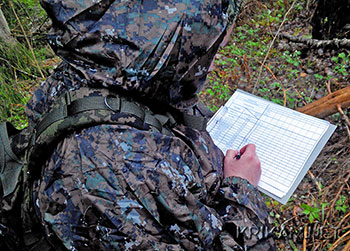
Frequency plan and signal estimation.
For the CB band, a frequency of 27.205 MHz is used, channel 20 of the central grid. The communication test is carried out separately for AM and FM modulation.
For the VHF band, the frequency is 145.525 MHz. When conducting tests, officially formed call signs of the amateur radio service are used, which belong personally to the persons who conducted the tests, in full compliance with the regulations for conducting radio communications in this allocated section of the frequency range.
For the UHF band, an unlicensed frequency of 434.000 MHz is used, channel 38 LPD.
We evaluated the signal on a 5-point scale and used the following criteria:
- 0 - no reception. The squelch does not open, when the "monitor" (MONI) button is pressed, the speech is unintelligible or there is no signal at all.
- 1 - abrupt reception. Occasionally, the squelch opens, words can be illegible, when MONI is pressed, speech is audible, but poorly intelligible.
- 2 - weak reception. The squelch opens stably, speech is legible against the background of strong noises, noises can be louder than the useful signal, some parts of phrases can occasionally disappear.
- 3 - stable reception. The squelch opens stably, speech is clear, constant noise in the channel, the level of noise and the useful signal are approximately the same.
- 4 - good reception, speech is clear, periodic noise and interference in the channel, the volume of speech is much higher than the noise.
- 5 - excellent reception, speech is clear, noise is completely absent.
In addition, we used the "plus" and "minus" signs as an additional subjective assessment of the signal by the correspondent, who did not participate in the final summing up.
For the Motorola DP1400 UHF Digital walkie-talkie, the working version of the table uses the rating "5/2" at some points. This is due to the classic behavior of the digital communication standard - the connection is either excellent or disappears almost completely. When summing up, she was given the lowest score of the two.
Go!
We charged all 28 radios, took them with us and set off.
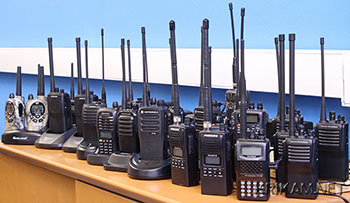 |
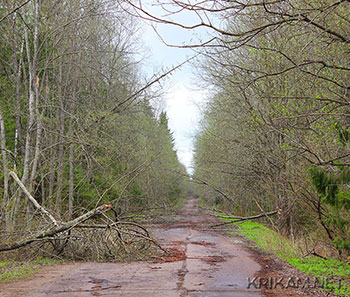 |
Finding a place for the Base in the forest with a convenient driveway was not an easy task, but after a few hours we finally set up camp and organized a workplace. After a short snack, we once again repeated the method of measuring and evaluating the signal, agreed on a sequence of actions, and part of the group went deep into the forest.
 |
 |
The choice of the first point and its distance from the Base was a very controversial moment - we thought that 300 meters was too little and all the walkie-talkies would show a solid "five", but, nevertheless, we started earlier.
As expected, communication was mostly excellent on all models, however, the last 27 MHz radios on the list were an unpleasant surprise: Alan 42 Plus - speech is barely intelligible against the background of strong noise in AM modulation, in FM modulation speech intelligibility is higher, but no more than 3 points; President Randy II P outperformed Alan, but also scored 3 in AM due to strong background noise and 4 in FM.
We went further and further, painstakingly checking the connection at each new point. At the mark of 802 meters Alan 42 completely gave up - the connection was absent in both modulations, after 1600 meters we stopped testing it. At the same time, the second CB walkie-talkie President Randy II P still held on.
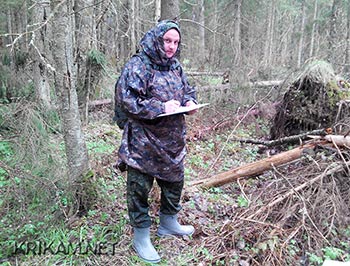
For a long time, the digital Motorola DP1400 UHF was the leader in signal quality, but from the mark of 1094 meters speech became intermittent and most of the phrases disappeared, it was almost impossible to understand the subscriber. I was pleasantly surprised by the Midland GXT-1050 - despite the budget class, this pair competed with more expensive models in the UHF frequency range.
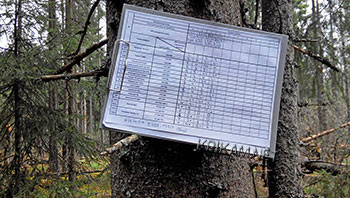
The final point of our route was the mark of 2560 meters - it was here that all models of radio stations in the UHF and CB bands stopped working. On all models, there was an attempt to establish communication in the "Monitor" mode (with an open squelch), but only the VHF band "worked". Here we decided to end our walkie-talkie test, as there was enough data collected to draw conclusions.
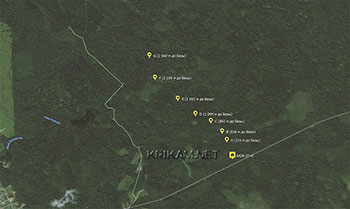
Experimental results.
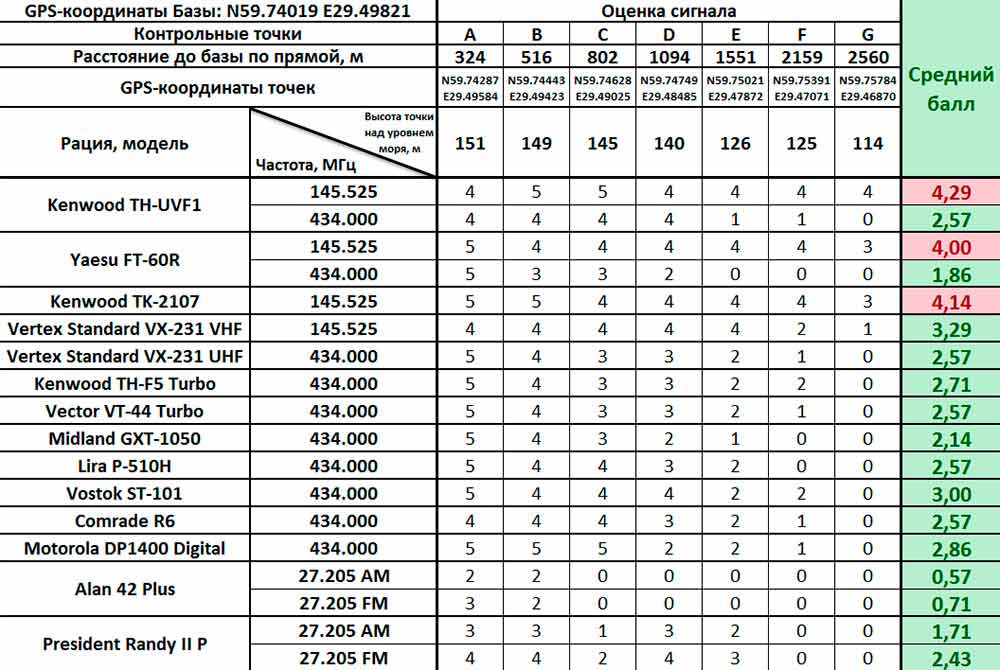
1st PLACE (4.29 points): Kenwood TH-UVF1 (VHF)
- the clear winner. On the VHF frequency band 136-174 MHz, the connection was good throughout our journey. At the first mark of 324 meters, we heard a stable background noise, which corresponds to a rating of 4. At further test points, in which the radio received an "Excellent" rating, this noise was not noticed. The walkie-talkie can be recommended for communication in difficult conditions: wet dense forest with elevation changes and terrain changes. An excellent walkie-talkie for the huntsman, the hunter and the radio amateur-traveler.
2nd PLACE (4.14 points): Kenwood TK-2107
- a pleasant surprise. The budget walkie-talkie turned out to be much better than the more famous and expensive models. It can be recommended to anyone who has a precisely defined frequency grid for communicating in a group - the radio is programmed in advance using a personal computer, working on 16 preset memory channels. The best option for those who do not need to manage hundreds of functions right on the spot, but need an inexpensive and "long-range" walkie-talkie for the forest.
3rd PLACE (4.00 points): Yaesu FT-60R (VHF)
- we were sure that this well-known model will take some prizes. When operating in the VHF amateur radio band, even with a standard antenna, it lived up to expectations. Confident communication, well-known trademark, excellent receiver, convenient hand-held noise suppressor, rich functionality of this legendary model, which once again confirmed its high Japanese quality, are worthy of the attention of everyone who needs a universal and advanced high-quality walkie-talkie for the forest.
4 PLACE (3.29 points): Vertex Standard VX-231 VHF
- professional programmable radio in the range of 136-174 MHz. According to the average assessment, it cannot be called far behind the leaders and it can also be recommended for communication in the forest. Of course, under more favorable weather conditions, the range will increase. If you need a reliable communication tool from one of the leaders in the radio communications market, Vertex Standard is an excellent choice.
5 PLACE (3.00 points): Vostok ST-101 (short antenna)
- the leader among walkie-talkies in the UHF 400-470 MHz range! And this is with one short antenna of the two included in the kit! When using the extended antenna that comes with the radio, you can safely count on better performance. If you are going to the forest with friends and you need communication on unlicensed frequencies - Vostok ST-101 is your choice! Loud speaker, good modulation, convenient form factor, the ability to use all LPD and PMR channels - the best choice of license-free walkie-talkie for hunters and mushroom pickers!
6th PLACE (2.86 points): Motorola DP1400 UHF
- This professional radio has been tested by us in the MotoTRBO standard. In the digital standard, everything is simple: the classic "1" and "0" - there is a connection, or there is no connection. Correctly assessing this walkie-talkie was the most difficult thing - after all, there are no interference in the "digit" and it is impossible to use the "MONI" button to receive a weak signal. After the removal of 1094 meters, the connection was either perfect, or immediately disappeared completely. Most likely, such a walkie-talkie in the VHF frequency range would break into the top three. But the sound of this walkie-talkie, its ultra-loud speaker, which echoed hundreds of meters, regardless of its scores and ratings, make it an excellent high-tech communication tool. Without any doubt, the peculiarity of the propagation of radio waves in the UHF frequency range played a key role in its behavior.
7th PLACE (2.71 points): Kenwood TH-F5 Turbo
- as expected, the well-known model justified its popularity - one of the most budgetary models of our test was ahead of eminent competitors. High transmission power, compact size, many functions available for control at any time, make it an indispensable companion for communication even in difficult conditions of wet forest. It can be recommended to both mushroom pickers and hikers, especially since it allows the use of unlicensed LPD and PMR ranges.
8 PLACE (2.57 points): Kenwood TH-UVF1 (UHF), Vertex Standard VX-231 UHF, Vector VT-44 Turbo, Comrade R6, Lira P-510H
- all these walkie-talkies scored the same number of points, operating in the frequency range of 400-470 MHz. Since walkie-talkies of various price categories got to this place, we can draw the main conclusion: they are typical representatives of the UHF frequency range and provide average communication distances in the forest up to 1.5 km.
9 PLACE (2.43 points): President Randy II P (FM)
- Contrary to expectations, the top model of the CB range showed modest results. In FM modulation, communication was with less interference, unlike amplitude modulation. However, this walkie-talkie provides the ability to "open" for increased output power, and this is an excellent potential for increasing the range.
10th PLACE (2.14 points): Midland GXT-1050 LPD
- turned out much better than expected. Despite being overtaken by more expensive models, the GXT-1050 held its own and was only marginally behind. These walkie-talkies can be recommended for weekend trips and family vacations. They are inexpensive and versatile: without extra buttons and functions, they work strictly on unlicensed LPD channels, they come in a set of 2 pieces with chargers from the cigarette lighter and headsets in the kit, they can run on AA batteries and even a child can handle them.
11th PLACE (1.86 points): Yaesu FT-60R (UHF)
- if this walkie-talkie in the VHF range took a high place, then on the unlicensed LPD channel it was only in the lower positions of the rating. Of course, the main reason for this is the propagation of radio waves in a given frequency range. To improve the efficiency of using this band with this amateur radio model, we recommend additional and extended antennas.
12th PLACE (1.71 points): President Randy II P (AM)
- and again familiar to us representative of the CB band, this time in AM modulation. Despite the abundance of noise, the speech was stable and well audible. At point C at around 802 m, she received a low score, apparently due to the terrain. It can be recommended as a universal communication device: for communicating with truckers in a car with an external antenna, for use in the forest at medium distances and for maintaining the ability to attract attention in case of an emergency.
13th PLACE (0.57 / 0.71 points): Alan 42 Plus (AM/FM)
- this well-known station closes our rating. Alas, only within a radius of 500 meters we managed to establish at least some connection with its help. After the mark of half a kilometer, all further attempts were in vain. According to our assumptions, the main reason for this was its standard inefficient antenna. To improve the communication range parameters with this radio, it is necessary to use optional antennas designed for the CB band, or as a car radio connected to a car antenna.
Let's sum up.
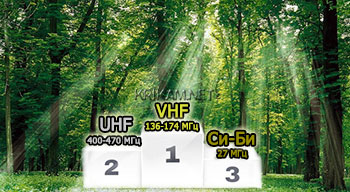
As can be seen from the results, the first positions were occupied by walkie-talkies using the VHF band, then the models of the UHF band follow and portable SiBishki close the rating.
CB radio stations showed low results, in addition, strong interference prevailed in the channel throughout the test. Models using the license-free LPD frequency performed equally well on average up to the 1.5 km mark. The VHF models worked best of all throughout the route, and we decided to dedicate the next test in the forest to their maximum communication range. Thanks for attention!

Author: Krikam
Source: https://krikam.net/content/review/radiostantsii/test-portativnykh-ratsiy-v-lesu/











































































































































